Panax trifolius – Dwarf Ginseng
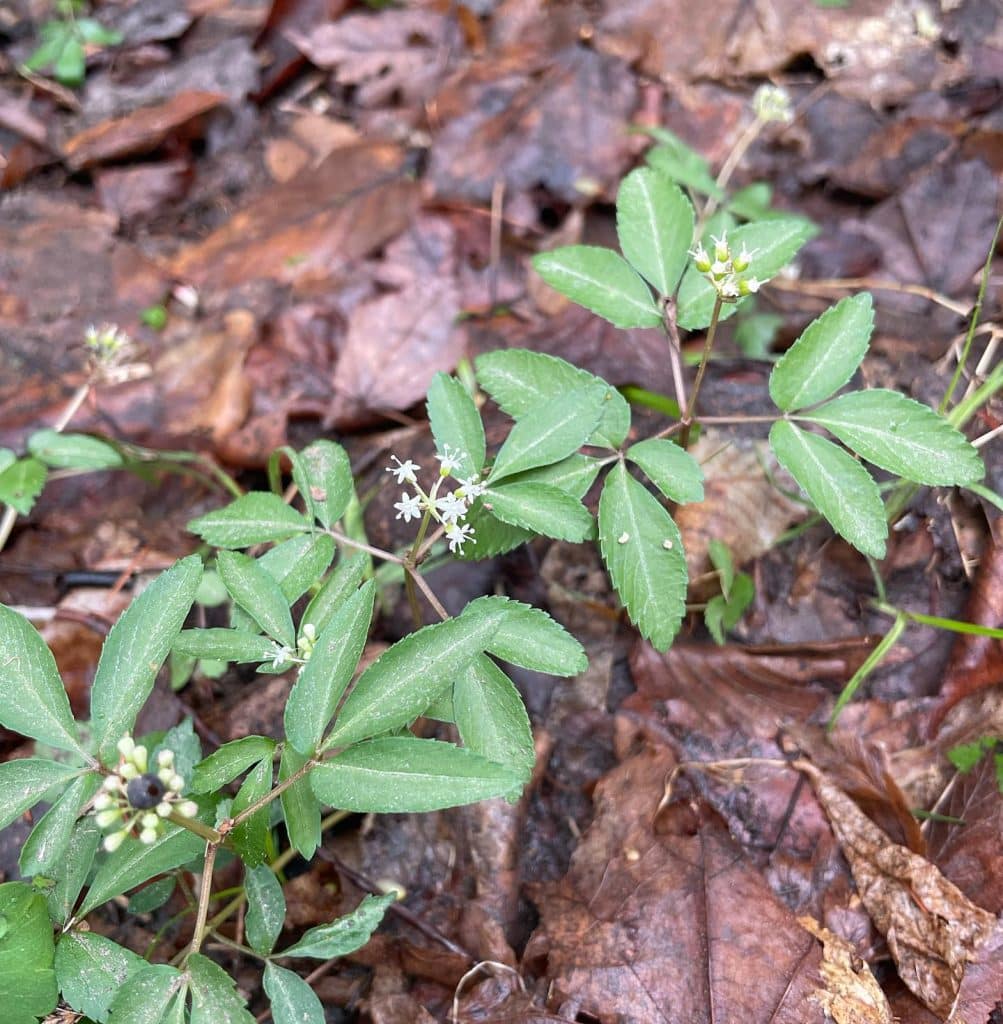
Dwarf ginseng (Panax trifolius) is a native spring ephemeral. Dwarf ginseng, also known as “groundnut”, can be found in moist areas along forested creeks. It can form dense colonies in ideal conditions. Dwarf ginseng has three leaves that are arranged in the shape of a triangle. Each leaf is made up of three or […]
Lunaria annua – Annual Honesty
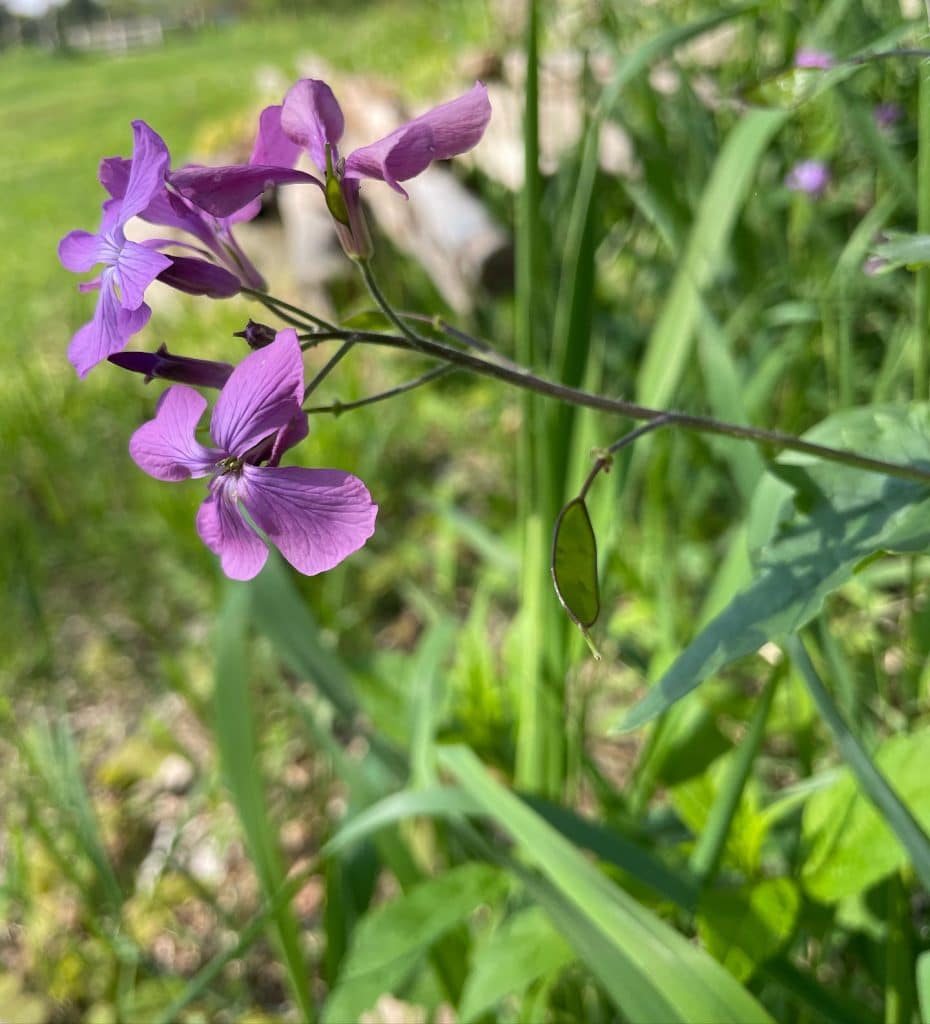
Annual honesty (Lunaria annua) is a non-native biennial that can be found in cultivated gardens and as an escapee in woodlands and waste places. Annual honesty, also known as the “money plant”, has finely hairy, heart-shaped leaves with toothed edges. The flowers have four petals in a cross shape. They are usually purple but can […]
Wisteria spp. – Wisteria
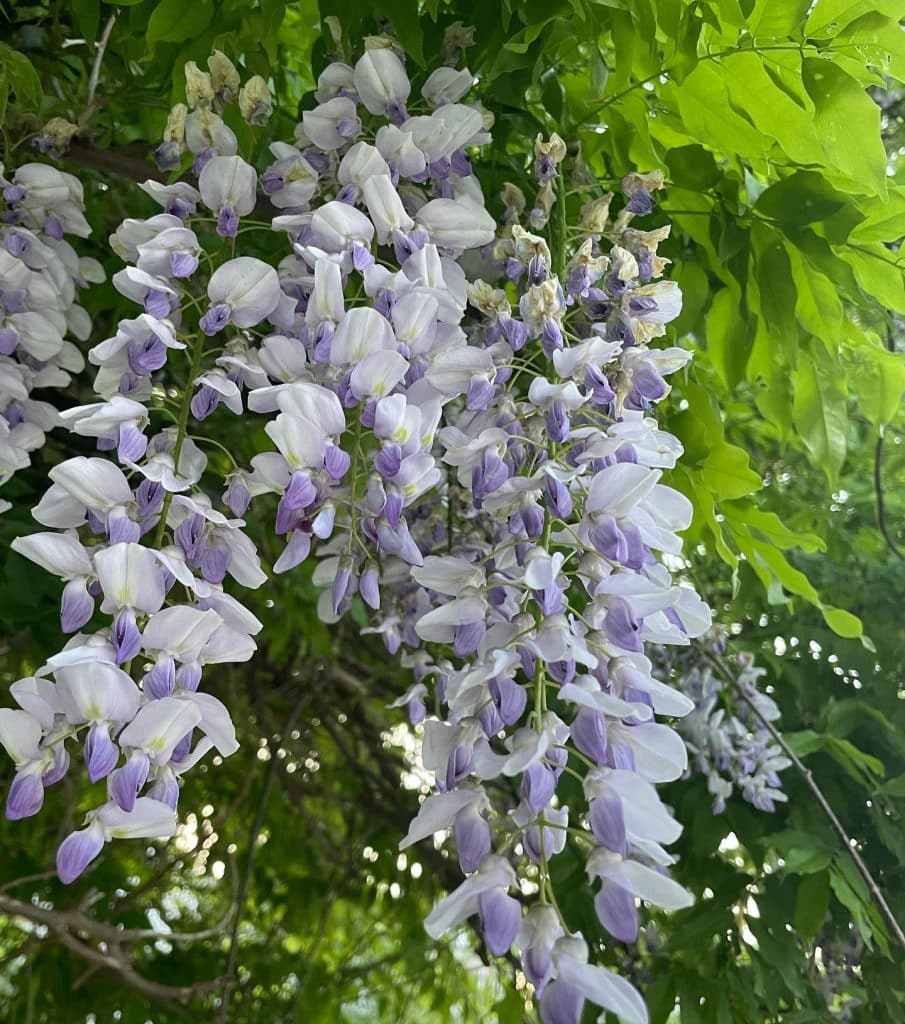
Wisteria (Wisteria spp.) is a genus of flowering vines in the legume family. There are both native (American wisteria) and invasive (Chinese and Japanese wisteria) species of wisteria that can be found in CT. All wisteria flowers are edible and can be used interchangeably in recipes. Wisteria can be found in areas that receive […]
Geranium maculatum – Wild Geranium

Wild geranium (Geranium maculatum) is a native perennial that blooms late spring to early summer. Wild geranium, also known as “Crane’s bill geranium” can be found growing in dense patches in deciduous woodlands and meadows. It can also be easily cultivated in partial shade to full sun. The plant has deeply lobed leaves with […]
Pluteus cervinus – Deer Mushrooms

Deer mushrooms (Pluteus cervinus) are common edible mushrooms that can be found around the world. There are 40+ species of Pluteus in North America. All species in this genus are wood rotters with free gills and pinkish spore prints. Some Pluteus mushrooms are edible, some are psychoactive, and some are too small to forage. Deer […]
Phytolacca americana – Pokeweed

Pokeweed (Phytolacca americana) is a native perennial that is a traditional food of Native Americans and Southerners. Pokeweed can be found in fields, roadsides, and forest edges. It prefers disturbed soil in partial shade to full sun. Pokeweed starts to send up shoots in mid-spring. Shoots should only be harvested when they have tender, […]
Syringa spp. – Lilac

Lilac (Syringa spp.) is a genus of 12 species of flowering woody plants that are native to southern Europe and Eastern Asia. Lilacs are commonly grown in temperate areas. Lilac flowers are edible raw. They have a floral flavor, reminiscent of their scent. Lilacs can be infused into sugar or honey. They can be used […]
Cardamine concatenata – Cut-leaf Toothwort
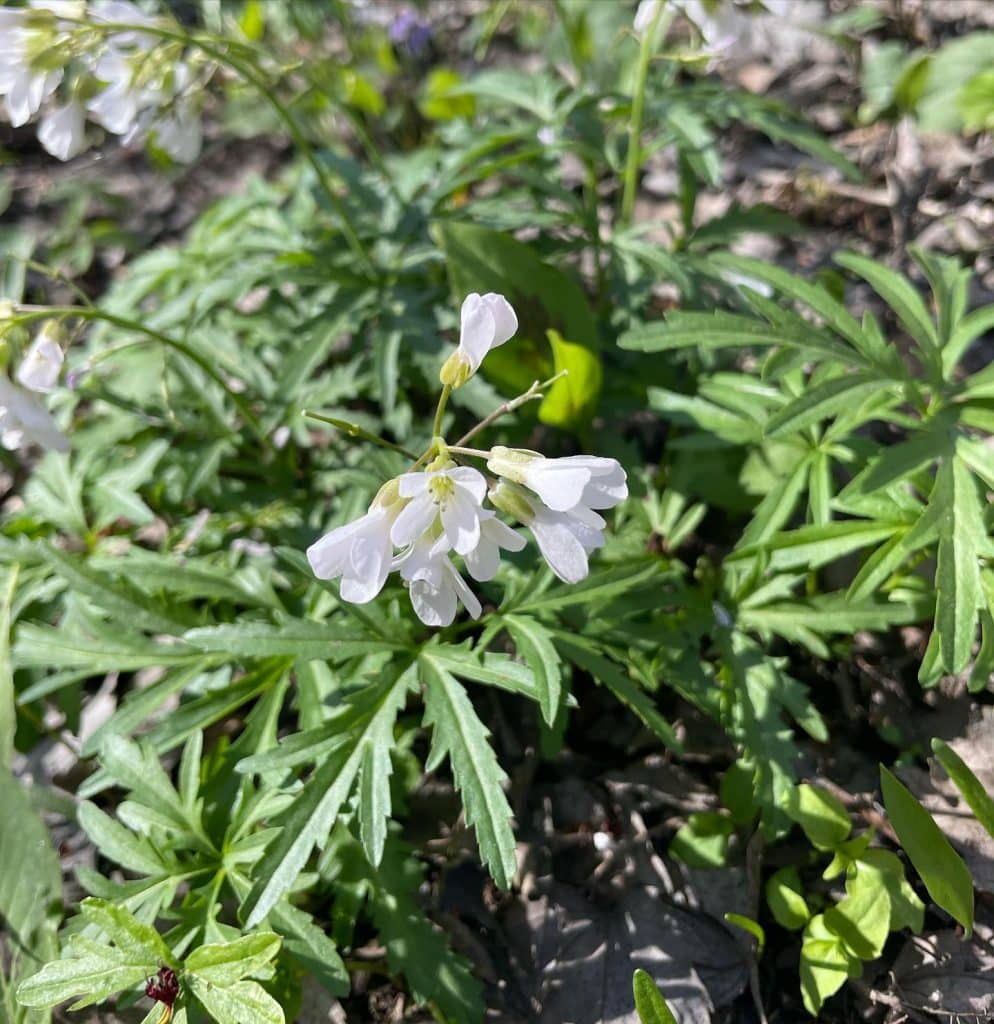
Cut-leaf Toothwort (Cardamine concatenata) is a native, edible ephemeral in the mustard family. Cut-leaf toothwort can be found in hardwood forests with rich soil. They are often found growing near other spring ephemerals such as Virginia Spring beauty and trout lily. They can form dense colonies from their tubers. Cut-leaf toothwort has three deeply […]
Allium tricoccum – Ramps

Ramps (Allium tricoccum) are a native species of onion that can be found late March- early May in CT. Ramps can be found in woodlands with rich, moist, well-drained soil. They usually grow under trees but get full sun since the leaves are not yet out. Ramps have 1-3 leaves that attach to a white […]
Viola sororia – Common Violets
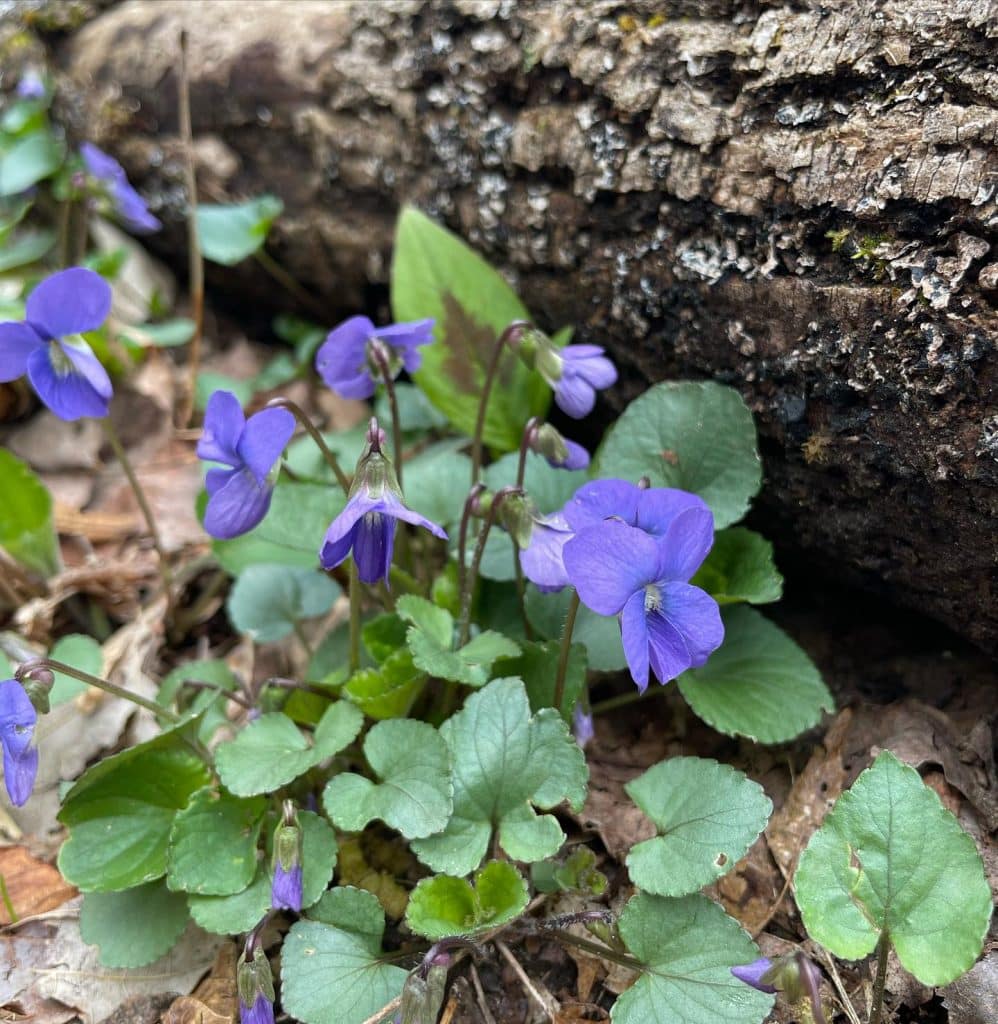
Common Violets (Viola sororia) are a native perennial that produce one of the first spring flowers. Common violets prefer moist soil with partial shade. They are often found under deciduous trees. Common violets have heart-shaped leaves with small, pointed teeth at the leaf margins. Flowers have five petals that are usually purple with some […]
Hosta spp. – Hostas
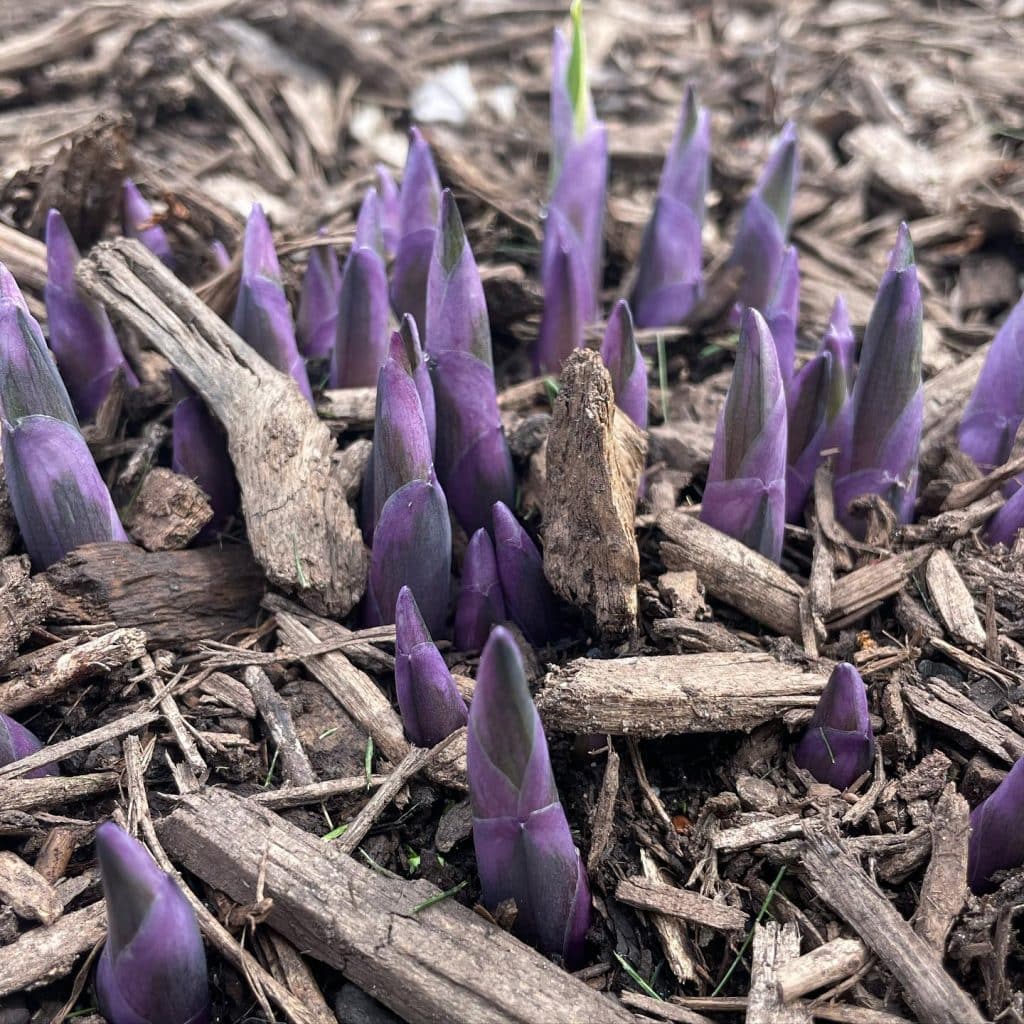
Hostas (Hosta spp.) are a common landscape perennial that thrive in shady woodland conditions. They are commonly eaten in Japan as a “mountain vegetable”. Hostas are edible from shoot to flower. In the spring, shoots can be cut and eaten raw or lightly sautéed. Look for larger young shoots that are tightly coiled. They will […]
Matteuccia struthiopteris – Ostrich Fern
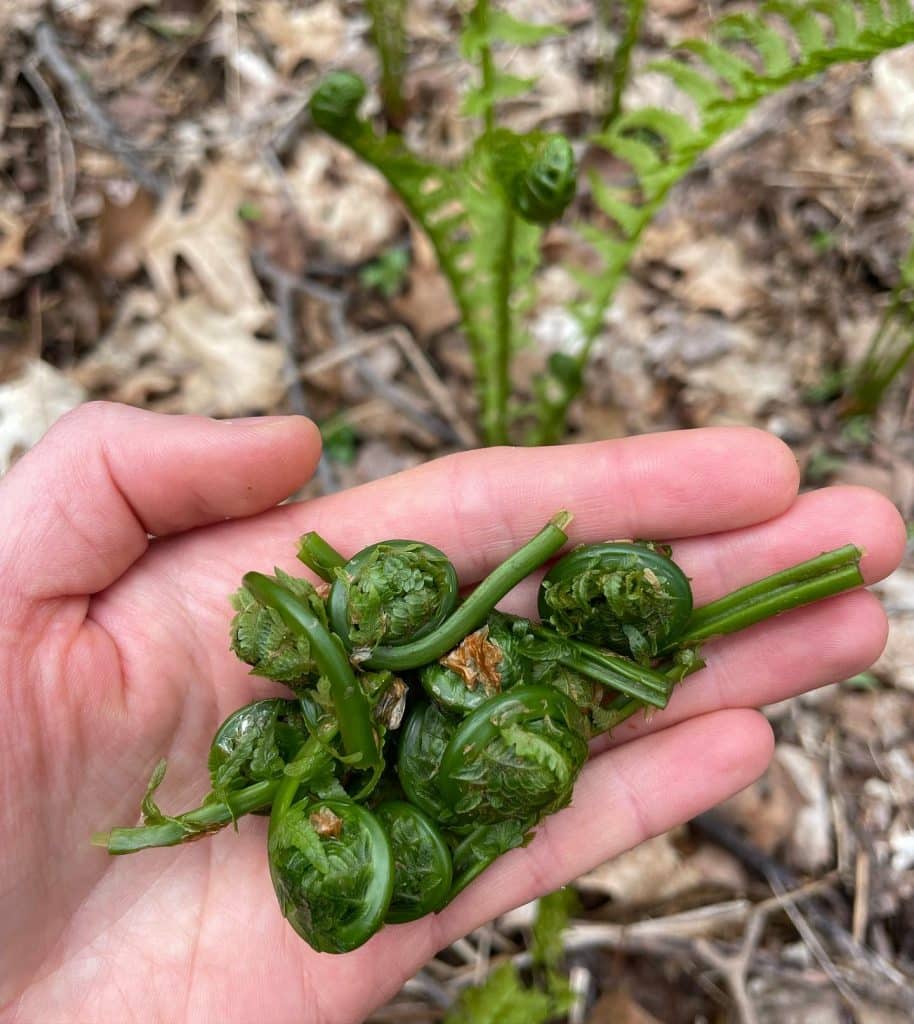
The Ostrich fern (Matteuccia struthiopteris) is the only fern in CT that produces edible fiddleheads in the spring. The fiddlehead is the immature, furled frond of a fern. Ostrich ferns can be found in rich, disturbed soil. Check near water sources with wet, sandy soil. They are most common in river floodplains. Ostrich ferns can […]
Reynoutria japonica – Japanese Knotweed
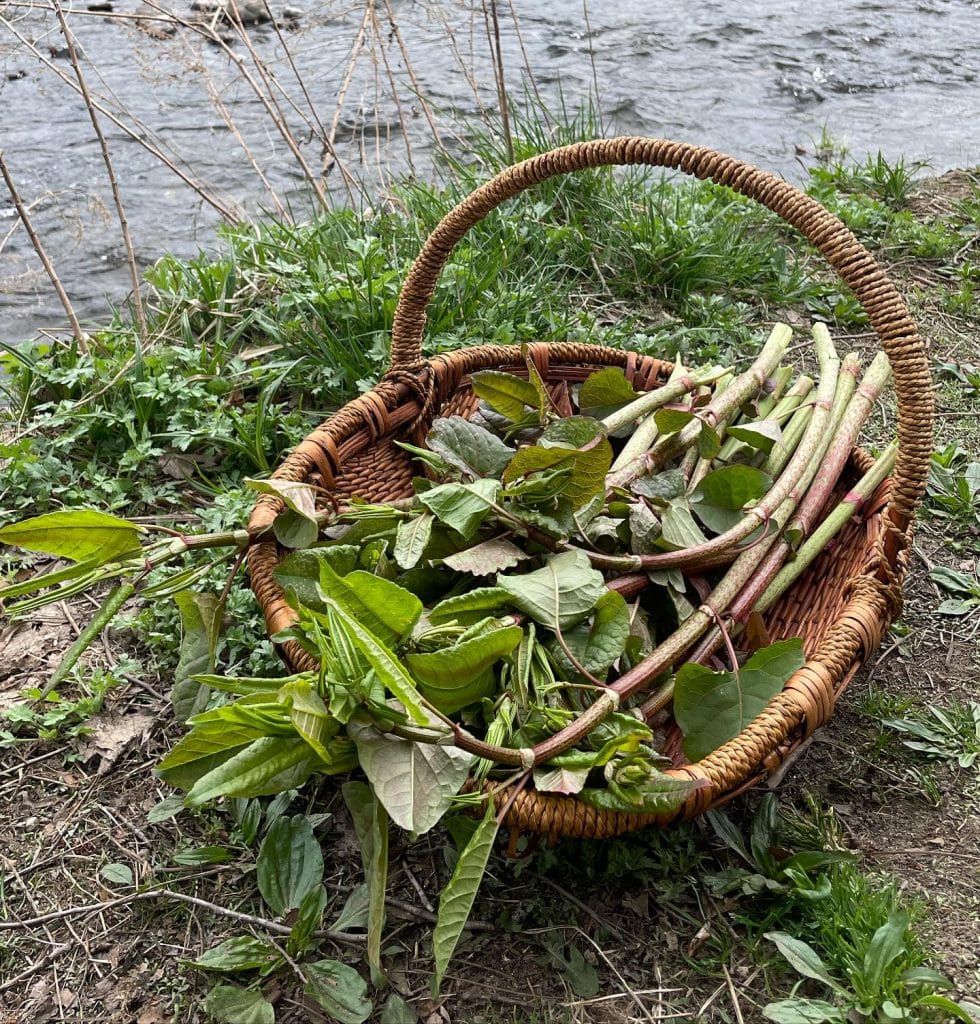
Japanese knotweed (Reynoutria japonica) is an invasive perennial that was brought to the U.S. from Asia as an ornamental. Japanese knotweed can be found in moist areas that receive sunlight. It often grows in large thickets in disturbed areas. It can grow up to 15 feet tall and its root system can reach 20 feet […]
Artemisia vulgaris L. – Mugwort
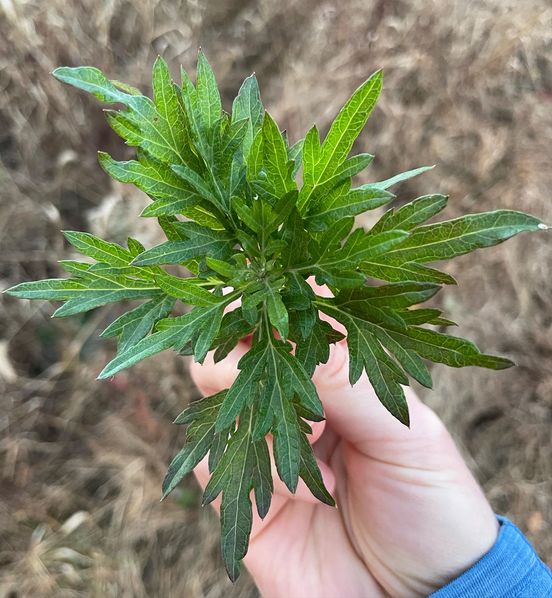
Mugwort (Artemisia vulgaris L.) is an invasive perennial plant that came from Europe. Mugwort can be found in fields, roadsides, and woodland edges that have partial to full sun. Its rhizomes exude a chemical that discourages growth of other plants. This allows mugwort to take over entire fields. Mugwort leaves have a green upper […]
Alliaria petiolata – Garlic Mustard

Garlic mustard (Alliaria petiolata) is an edible invasive plant in the mustard family. Garlic mustard can be found in human-disturbed areas, shaded field edges, and woodlands. It has the ability to take over woodlands and kill off 90% of all other herbaceous plants. Garlic mustard has no native predators and seeds can last up to […]
Magnolia spp. – Magnolia
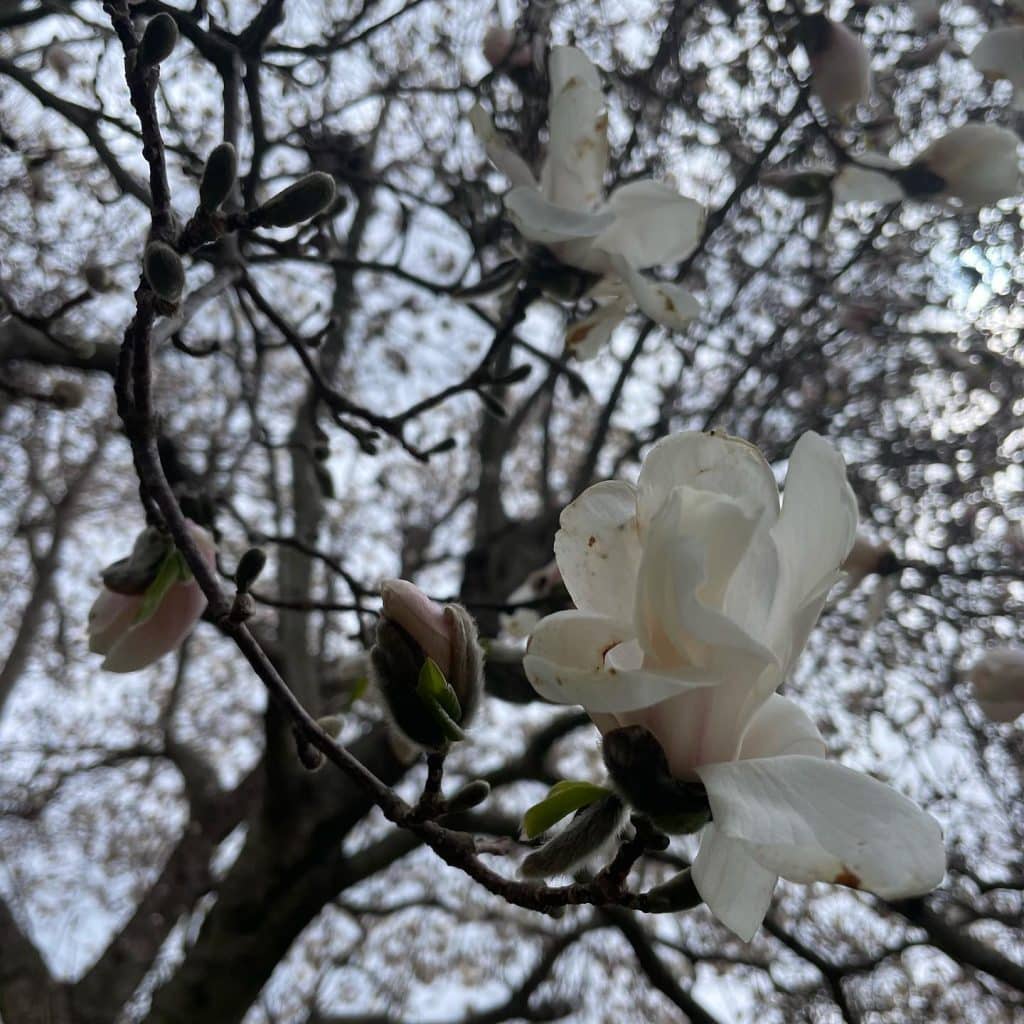
Magnolia (Magnolia spp.) is one of the first blossoms to appear in the spring. The flowers bloom for 1-3 weeks before the leaves appear. Magnolia is a genus of over 200 flowering plant species. Although some species are native to eastern North America and South America, most species are native to Asia. Magnolia can be […]
Cardamine impatiens – Narrowleaf Bittercress

Narrowleaf Bittercress (Cardamine impatiens) in an edible invasive plant in the mustard family. Narrowleaf bittercress can be found in woodlands, meadows, and near rivers. It prefers shade. The plant starts as a rosette with leaves with 13-21 leaflets. These leaflets are round with lobes. As the plant ages, it produces a flowering stalk with […]
Salix babylonica – Weeping Willow
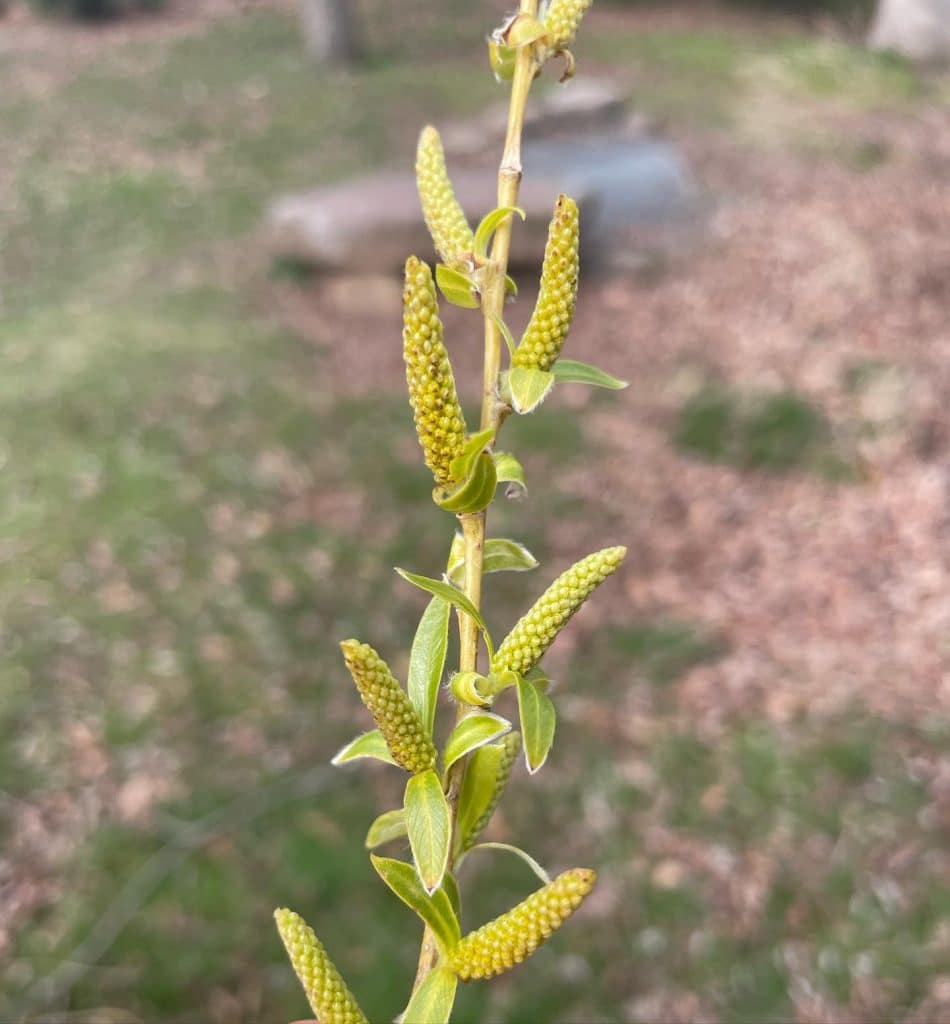
Weeping Willow (Salix babylonica) is an edible and medicinal tree that came from Northern China. Willows are one of the first trees to bud in early spring. They can be found growing near water in full sun. Willows often form many small trunks due to their salicylic acid content which acts as a natural […]
Heracleum maximum – Cow parsnip

Cow Parsnip (Heracleum maximum) is a native perennial in the carrot (Apiaceae) family. Cow parsnip can be found along rivers, swamps, and forest edges. It prefers partial to full sun. Cow parsnip has 3-part, alternate, compound leaves with irregularly toothed and lobed margins. The leaves can grow to be 2 feet across at maturity. […]
Hylotelephium telephium – Stonecrop
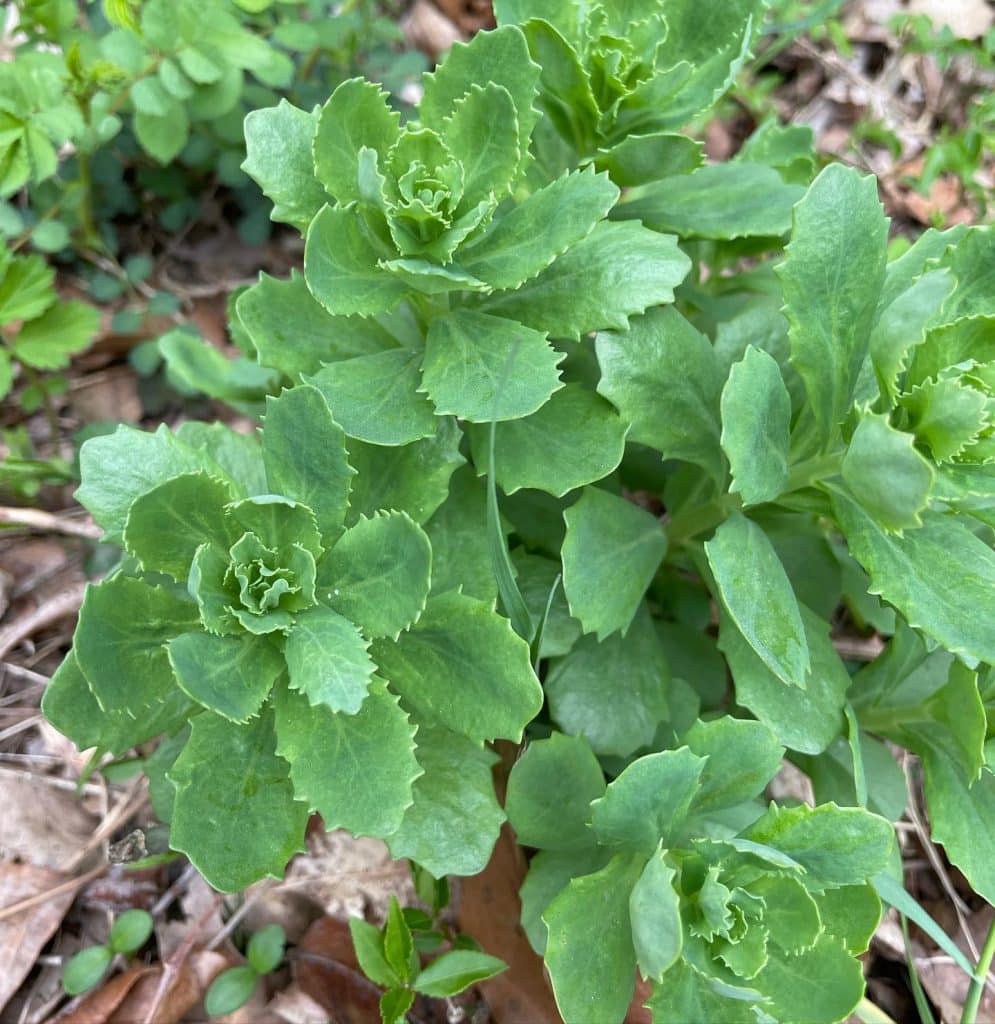
Stonecrop (Hylotelephium telephium) is an edible perennial from Eurasia that can escape cultivation and naturalize in North America. Stonecrop can be found growing wild in sunny, dry areas. It has succulent leaves and fleshy stems. The plant produces pink, star-shaped flowers from late summer to early fall. Young stonecrop leaves are edible raw or cooked. […]
